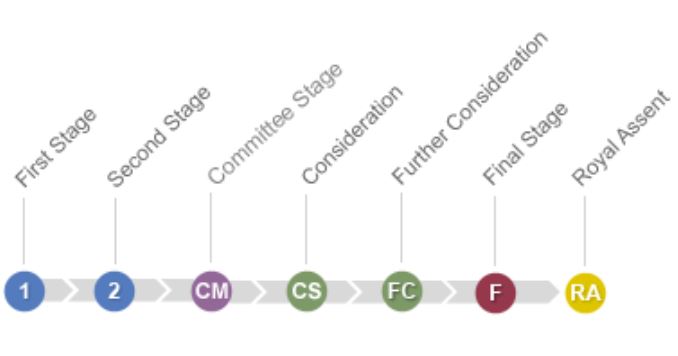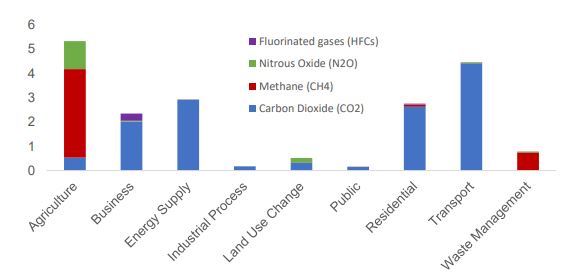There has been a lot of talk about Northern Ireland's proposed new Climate Change Bill as it begins its passage through Stormont.
Agriland northern correspondent Rachel Martin takes a look at what's included in the detailed document, as well as its potential implications for the industry.
What's included in NI's proposed Climate Change Bill?
The Climate Change Bill sets a net-zero target for Greenhouse Gas (GHG) emissions by 2045.
The proposed legislation, which has been put forward as a Private Member's Bill by Green Party MLA Clare Bailey, is about to undergo its second reading at Stormont.

Once it passes, it will go to the committees for further scrutiny before coming back to the Assembly for final consideration. Ultimately, all new bills need Royal Assent; however, the last time a bill was refused Royal Assent was in 1707.
If passed, the Climate Change Bill will formally declare a state of climate emergency in Northern Ireland. It will also set a legally-binding net-zero target for the region to be achieved by 2045.
Clauses inserted in the document mean the target cannot be reduced and the date cannot be pushed back. However, it can be brought forward.
Climate Action Plan
If passed, the Executive Office will have to make a 'Climate Action Plan' within three years, and a new climate plan every five years.
The Climate Action Plan will set targets for net GHG emissions, water quality, soil quality and biodiversity so will likely have a significant and direct impact on the region's farms.
Its overriding goal is to develop a "net-zero climate-resilient and environmentally-sustainable economy by the year 2045".
Each plan will be kept open for public consultation for 16 weeks.
Greenhouse Gases to be measured include:
- Carbon dioxide (CO2);
- Methane (CH4);
- Nitrous dioxide (N2O);
- Hydrofluorocarbons (HFCs);
- Perfluorocarbons (PFCs);
- Sulphur hexafluoride (SF6);
- Nitrogen trifluoride (NF3).
As it is not a Greenhouse Gas, ammonia (NH3) is not listed. However, the legislation makes provisions for other gas levels not listed to be monitored too, making it likely targets could also be put in place on ammonia emissions.
Targets will also be set for nitrogen-use efficiency, meaning further scrutiny of farm fertiliser use is almost inevitable.
The nitrogen budget will take into account all major flows of nitrogen in Northern Ireland; e.g. in its waters, atmosphere, and soil.
It will set annual targets to improve nitrogen efficiency, which it defines as the ratio of nitrogen removed from the environment compared to the total nitrogen added to the environment.
The proposed legislation will require individual plans to be made across nine sectors, including: Energy production; Transport; Infrastructure; Business and manufacturing; Residential and public buildings; Waste management; Land use; and Agriculture.
However, while the draft bill is detailed on what it demands, it makes no suggestion of the scale and extent of actions likely to be required to meet such a significant goal within the next 25 years.
There is also no assessment of the economic impact of the level of changes that are likely to be required.
How does NI agriculture currently stack up?
Out of the Greenhouse Gases listed above, methane is the biggest pollutant generated by Northern Ireland agriculture. Methane accounts for 23% of the region's GHG emissions, with 80% of that originating from farming.

However, in terms of carbon dioxide emissions, the sector is a relatively low emitter compared to other industries.

Image source: DAERA
While there is much debate over how methane should be measured, and whether it should be measured in terms of CO2 equivalent due to its shorter lifespan, it remains the industry’s largest pollutant.
Most of that comes in the form of cow burps. According to the Department of Agriculture, Environment and Rural Affairs (DAERA) Greenhouse Gas Inventory, enteric fermentation (digestion in the rumen) remains NI agriculture’s largest source of GHG emissions, accounting for more CO2 equivalent gases than fertiliser use, manure management and agri-combustion combined.
Click or tap the graph below to enlarge it.

Image source: NISRA
Departments will be able to purchase carbon units. However, the total amount of carbon units purchased must not exceed 25% of the goal set for any given year.
Climate Commissioner
The draft bill will also legislate for the establishment of a Climate Commissioner in Northern Ireland.
Responsibilities of the climate commissioner will include reviewing progress towards the goal and preparing reports on the region's progress.
The climate commissioner will also be asked to provide their views on the adequacy and effectiveness of the legislation and may also make recommendations on amendments which they believe should be made.
The Assembly wil be required to respond to any reports made by the climate commissioner within two months.
Should farmers be worried?
It's hard to see how they shouldn't be. DAERA officials have previously warned that a net-zero target is almost impossible for Northern Ireland to achieve without significant reductions in livestock numbers in the region. While the goal is proposed in the bill, no suggestion is made on how to reach the target.
Instead, the region's other proposed environmental bill, currently being prepared by the Department of Agriculture, Environment and Rural Affairs (DAERA) is expected to include goals to cut net GHG emissions by almost half (48%) by 2030 and 82% by 2050 against the base year of 1990.
In March, Colin Breen, the DAERA’s director of environmental policy division, warned that seeking to drive emissions even lower would simply risk off-shoring agri-food production overseas where emissions from food production may, ironically, be even higher.
There are also those who believe the push towards carbon-neutrality is a huge opportunity for the island's farming. However, the issue facing NI and ROI is that the ability of farms to sequester carbon and methane's short lifespan need to be taken into account in modelling systems and currently that is not the case.
There will of course be gains made by advances in farm efficiency, science and technology over the next 25 years. Regular readers may recall Agriland's recent feature outlining new research into the potential of including seaweed in ruminant diets to reduce methane emissions.
If successful, this research would be a game-changer for meeting agricultural emissions targets. However, this work is in its infancy; even if everything should go to plan, it would take several years before there are any widespread changes at farm-level. Then add into the mix the potential issues surrounding where the best methane-inhibiting seaweeds can be grown, and concern that they may not be seaweeds native to the island's waters.
Critics of the bill have said it does not include any economic impact or rural needs assessment.
The Green Party was contacted for a statement. However, at the time of publication had yet to respond.

